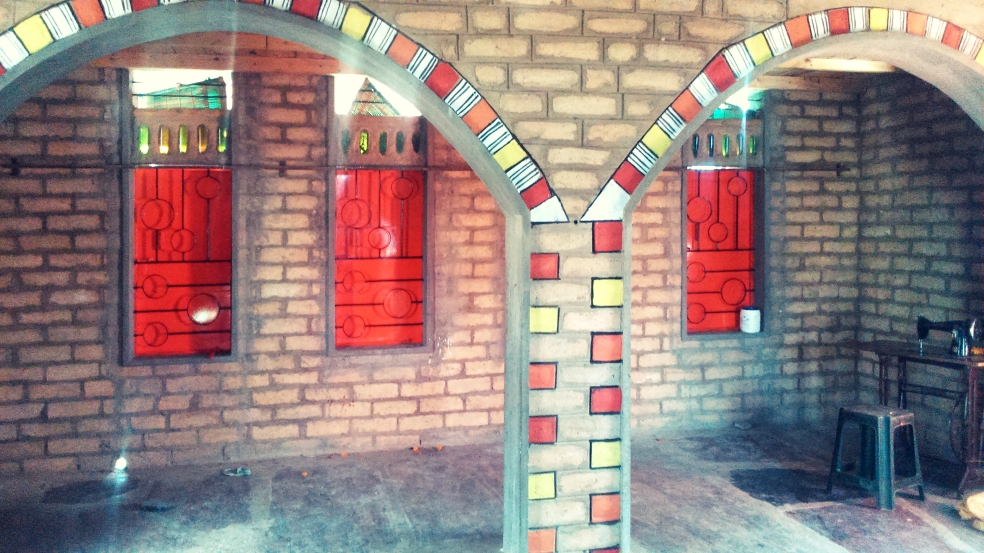Stabilised adobe blocks (SAB) are used as the primary building material for the Timmaiyanadoddi constructions. The old homes are built with mud, but lack in durability and stability. They have good dry strength, but in wet weather they are prone to termite- related problems and hence their strength is compromised.
Stabilised mud blocks have the addition of a little cement into the mud mixture. These blocks require some time for curing and sun drying, but do not need to be burnt. The blocks are easy make as they do not require any skilled labour and they are also easy to construct with.[i]
In Timmaiyanadoddi, blocks were made at site by local workers and masons using mud from the area. These bricks were used in the community centre as well as in all the homes.
Compressed Stabilised Earth Blocks (CSEB) are more widely used for earth block construction. These blocks are compressed using a maching. But, in Timmaiyanadoddi, blocks were hand-pressed using a process called pugging and not with the use of a compression machine. This made it even more cost effective and for future construction the local labourers would not be dependent on a machine. For the community centre, a team of 5-6 labourers made the blocks, but for the house construction, a team of 3 worked more efficiently.
Some of the advantages of these blocks:
- Local Material: Ideally, the production is made on the site itself or in the nearby area. Thus, it will save the transportation, fuel, time and money.
- It is Biodegradable: Despite its high resilience to various climatic conditions, Adobe building rubble will decompose in a few years by the bio-chemicals in soil.
- Energy Efficiency and Eco-friendliness: Pollution emission and energy consumption is considerably less than fired bricks.
- Cost Efficiency: Produced locally, with a natural resource and semi-skilled labour, almost without transport, it will definitely be cost effective.
- A Transferable Technology: Simple villagers can easily be trained in a short time since it is a simple technology and requires a few skills.
- Reducing Imports: Since they are produced locally by semi-skilled people, there is no need for import of expensive materials or transport from far places.
- Flexible Production: Using machinery to compress the blocks, variety of production scales are possible.
- Social Acceptance: Adobe blocks can be used for a variety of buildings differing in functions and scales. [ii]
There are some limitations of the material as it cannot be used for high spans and taller buildings. But with more awareness about the correct production techniques, there is great scope for the use of adobe in construction.
[i] Understanding Stabilised Mud Blocks – Dr.Yogananda (The Hindu, January 2015)

 y Centre was designed to have three segregated rooms despite the small area of the building. The multipurpose space would accommodate community activities, meetings, village functions, etc. and other future needs too.
y Centre was designed to have three segregated rooms despite the small area of the building. The multipurpose space would accommodate community activities, meetings, village functions, etc. and other future needs too.
